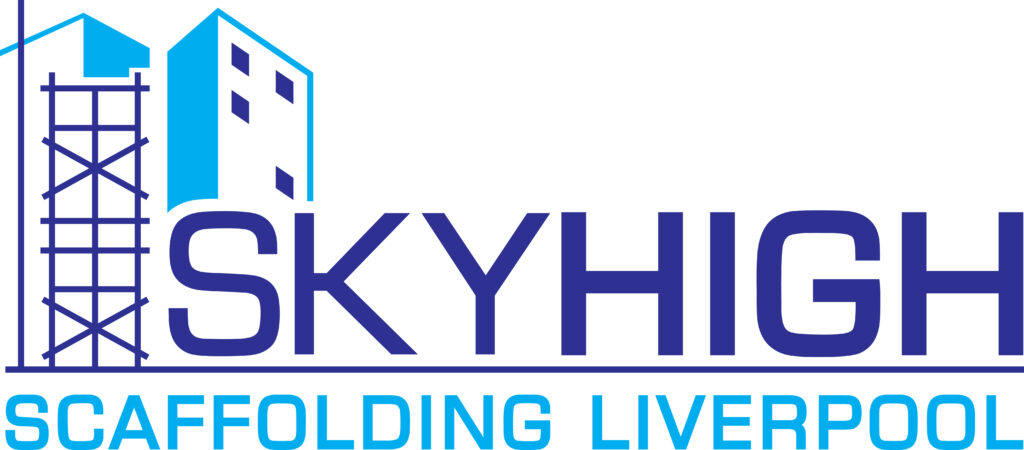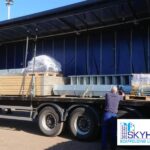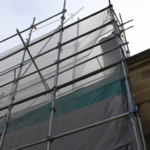Tired of the traditional scaffolding designs that have been around for centuries? It’s time to break away from those constraints and enter a world of contemporary scaffolding design in the UK. We will guide you through the evolutionary process, from its beginnings to its present-day wonders.
The days of unsteady wooden structures held together by sheer luck are gone. Thanks to technological advancements, scaffolding has undergone a radical transformation. Strong metal frames, adjustable platforms, and improved safety features have made construction sites more secure and efficient than ever before.
However, it’s not just about security; aesthetics also play a crucial role in modern scaffolding design. Architects now demand structures that seamlessly blend with the overall look of their buildings. From sleek, minimalistic designs to bold and captivating creations, scaffolding has become an integral part of architectural masterpieces.
So, what does the future hold for scaffolding design? Join Skyhigh Scaffolding Liverpool as we explore upcoming trends that will push the boundaries even further. Prepare to break free from traditional norms and embrace a new era of scaffolding liberation in the UK!
Historical Methods of Scaffolding in the UK
Dive into the fascinating world of historical scaffolding techniques in the UK! In the early days, wooden and bamboo were commonly used materials for constructing scaffolds. These materials provided a sturdy base for workers to carry out their tasks. Techniques involved interlocking wooden planks and poles, creating a stable platform that could handle heavy loads.
Workers would meticulously assemble these structures, ensuring they were secure and safe to use. The attention to detail was crucial in preventing any accidents or collapses during construction projects. Despite the limitations of traditional scaffolding, it served its purpose well and allowed workers to access areas that would otherwise be difficult to reach.
Since then, the design of scaffolding has evolved significantly, with modern methods incorporating more advanced materials and innovative techniques.
Technological Advancements in Scaffolding
With recent technological advancements, scaffolding has become more efficient and user-friendly. A significant innovation in scaffolding design is the utilization of 3D printing technology. This enables the production of accurate and customized components, reducing the need for manual adjustments and improving overall safety on construction sites.
Automation has also been integrated into scaffolding systems, further simplifying the process and increasing productivity. Automated scaffold systems can be quickly assembled and disassembled with minimal human input, saving time and energy.
These advancements have made scaffolding easier to use and enhanced its versatility and adaptability to various construction projects. Workers now have access to safer and more efficient scaffolding options that allow them to carry out their tasks with greater ease and confidence.
The benefits brought by these technological advancements are evident in the improved efficiency and effectiveness of modern-day scaffolding design.
Safety Regulations and Standards
To ensure your safety on construction sites, you must familiarise yourself with the latest safety regulations and standards. This includes wearing Personal Protective Equipment (PPE) at all times. Training is crucial in understanding the potential hazards associated with scaffolding work and learning how to prevent them.
Knowing how to regularly inspect and maintain equipment is essential. Conducting thorough equipment inspections can help identify any defects or signs of wear that could result in accidents and injuries. Taking the time to carefully examine each component before use can protect you from harm.
Keeping up-to-date with industry standards is also important to ensure that you are following the best practices for scaffold assembly and dismantling procedures. Demonstrating your commitment to adhering to safety regulations shows your dedication to your own safety and avoiding unnecessary risks on construction sites.
Architectural Requirements and Design Integration
Immerse yourself in the world of architectural requirements and design integration, where every detail comes together to create a breathtaking masterpiece that will leave you in awe.
Scaffolding design is a crucial part of the architecture process, focusing not only on functionality but also on creating structures that are visually pleasing and harmonize with their environment. The incorporation of sustainable principles into scaffold designs has become a vital aspect of modern scaffolding.
Architects are now motivated to include sustainable materials and practices in their work, aiming to reduce environmental impact while maintaining structural integrity. This shift towards integrating sustainability has led to innovative scaffold designs that seamlessly blend with their surroundings.
From incorporating green spaces into scaffold assemblies to utilizing renewable energy sources for lighting and ventilation, architects are pushing boundaries to create sustainable scaffolds that offer both utility and aesthetic beauty.
So dive into this liberating world where architectural requirements meet design innovation to create remarkable works of art.
Future Trends in Scaffolding Design
The future of scaffolding design is poised to revolutionize the construction industry, as architects explore innovative techniques. They are incorporating vertical gardens into scaffold structures to create appealing green spaces that enhance their visual appeal and promote environmental sustainability.
This shift towards sustainable materials and modular systems aims to create scaffolding structures that are not only practical but also eco-friendly. Architects are increasingly utilizing sustainable materials like bamboo and recycled steel in their designs, reducing the carbon footprint of construction projects.
Modular systems also allow for quick assembly and disassembly of scaffold structures, making them more efficient and cost-effective. These advancements in scaffolding design offer a practical solution for construction projects and contribute to a more environmentally friendly future for the built environment.
Frequently Asked Questions
What are the various materials utilized in traditional scaffolding in the United Kingdom?
In traditional scaffolding in the UK, various materials are utilized to offer support and stability. Wood is frequently employed because of its strength and long-lasting nature, while bamboo is chosen for its lightweight characteristics and flexibility. These materials have been utilized for centuries in traditional scaffolding, demonstrating the resourcefulness of scaffold designers throughout history.
How has technology enhanced the effectiveness and security of scaffolding in recent years?
Improvements in technology have revolutionised the efficiency and safety of scaffolding in recent years, making it a game-changer in the construction industry. Through advances such as digital modelling, drones for inspection, and wearable tech for workers, the entire process has become more streamlined and exact.
These innovations have increased productivity and reduced human error and accidents on-site. This has had a major impact on the construction industry, freeing workers from traditional methods and enabling them to work with greater ease and confidence.
What are the primary safety regulations and standards that scaffolding companies in the United Kingdom must comply with?
To ensure safety, scaffolding companies in the UK must follow strict safety regulations and standards. These rules encompass various aspects, including construction materials, scaffolding design, and integration with buildings.
Advancements in technology have greatly improved productivity and safety, enabling more accurate architectural designs and overall performance enhancements. As the industry continues to evolve, future trends indicate a revolution in scaffolding design that will further enhance safety measures and provide workers with greater freedom.
How do architects incorporate scaffolding design into their overall architectural plans for a building?
Architects face significant challenges when incorporating scaffolding design into their architectural plans. It requires a level of thoroughness and precision that is unmatched.
There are numerous architectural considerations, ranging from ensuring that the scaffolding does not block views or hinder natural lighting, to maintaining the integrity of the building’s aesthetic.
By breaking free from traditional limitations, architects thoroughly examine every angle and dimension, creating a seamless fusion of functionality and aesthetics in their designs.
What are some potential future trends in scaffolding design that could revolutionise the industry in the UK?
In the United Kingdom, there is an anticipation of a transformation in scaffolding design as modern and advanced trends emerge. Architects and designers are currently exploring new materials, including lightweight and eco-friendly options, that can enhance efficiency while minimizing environmental impact.
Technological advancements will play a crucial role in this transformation, with features such as automated assembly and disassembly, integrated safety systems, and smart monitoring capabilities. These forward-thinking designs will revolutionize the industry by offering safer, more efficient, and environmentally friendly scaffolding solutions.
Thanks for reading, please do check out our other posts and services below:











